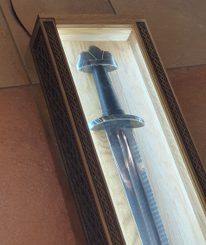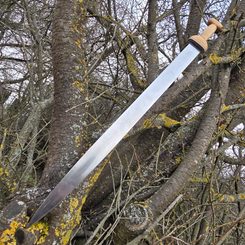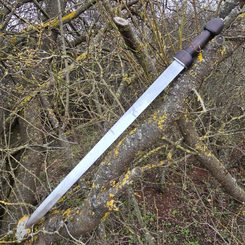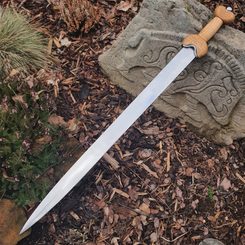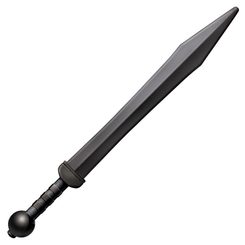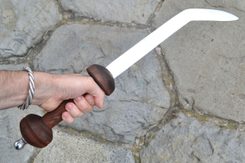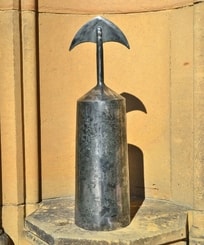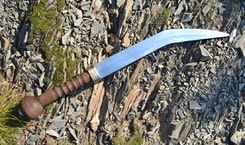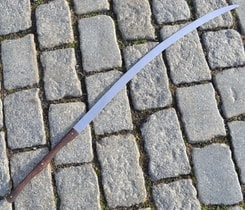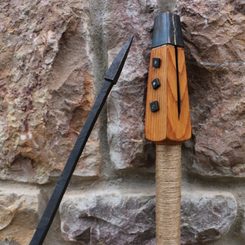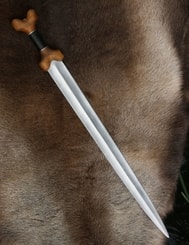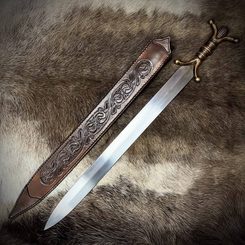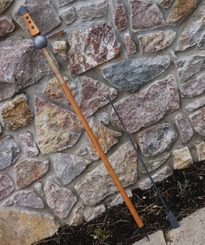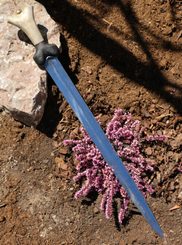-
Catalogue of products
-
- Sale
-
Silver jewellery
-
All in the category Silver jewellery
- Pendants
- Bracelets
- Rings
- Earrings
- Moldavites, czech
- Necklaces
- Golden jewellery
- Torcs - necklaces
- Amber jewelry
- Jewellery sets
- Brooches and buckles
- Silver and stones, jewels
-
Thematic jewelry collections
-
 All in the category Thematic jewelry collections
All in the category Thematic jewelry collections
- Lapponia jewellry
- VIKINGS - bracelets
- Art nouveau jewelry
- Dinosaur pendants
- Mythology collection, ancient cultures
- Nautical silver jewelry
- Filigree and granulated replica jewels
- Garnet jewelry - czech made
- Mystica silver collection - pendants
- Mystica silver collection - earrings
- Mystica collection - silver necklaces
- Historical jewelry
- Zodiac, silver pendants
- Viking jewelry
- Pendants - Historia
-
-
-
Jewellery - bronze, zinc
-
All in the category Jewellery - bronze, zinc
- Amulets and talismans
- Bronze and brass replicas - jewellery
- Gilded jewelry
- Cords, boxes, chains
- Forged jewelry, torcs, bracelets
- Costume jewellery
- Keychains
- Fantasy jewels
- Crowns and tiaras
- Bronze historical jewels
- Chakra, reiki
- Celtic brass jewels, import from Ireland
- Badges, historic jewels
- Scottish clan badges
- Original celtic jewelry
-
-
Replicas - Swords, Axes, Knives
-
All in the category Replicas - Swords, Axes, Knives
- Sharp Blades - throwing knives
- Swords
- Axes, poleweapons
- Daggers
- Knives
- FakeSteel armory
- Maces, war hammers
- Saex knives, scramasax
- Lances, spears
- Archery
- Damascus steel knives
- Falchions and Lange Messers
- Swiss army knives
- HMB - swords, falchions, axes, weapons
- Firearms, cannons
- Viking knives
- Hunting hangers
- Pillow Fight Warriors
- Knives - accessories, sharpeners
- Kitchen knives
-
-
Armour Helmets, Shields
-
T-shirts, Boots
-
Ceramics, Glass
-
Leather Products
-
All in the category Leather Products
- Belts
- Bags, sporrans
- Belt accessories
- Hair clips, accessories, jewellery
- Wallets
- Wristbands
- Leather stamps
- Leather material, furs
- Custom made belts
- Leather masks
- Bottles, hip flasks
- Keychains, whips, other
- Leather care, dyes and stains
- Historical shoemaking
- Leathercraft tools
- Riding shop - horse saddles
- Falconry
- Furs, Reindeer Skins
-
-
Horn Products
-
Smithy Works, Coins
-
Bushcraft, Living History, Crafts
-
All in the category Bushcraft, Living History, Crafts
- Bushcraft
- Forged carving chisels
- Kuksa - Finnish dishes
- Leather, furs, skins, pergamens
- Europe
- Drugstore
- Historical glass beads, replica
- Rocailles Czech glass beads
- Deer antler products
- Craftsman tools, acessory
- Prehistoric ages
- Native americans
- Old Slavs
-
-
 Coins
Coins
-
Shoes, Costumes
-
Drums, Flutes
-
Historical Board Games
-
Pagan decorations
-
All in the category Pagan decorations
- Figures, lamps, cups
- Vánoční ozdoby
- Boxes, pencil cases
- Mugs, goblets, scarves
- Dragons
- Antler furniture, lamps
- Animal figures
- Historical miniatures
- Wall plaques, clock
- Pictures
- Products from antler, wood
- Exterior decorations
- Scrolls, posters, puzzle
- Tin figures, goblets
-
-
Woolen products, Ireland
-
 Wood
Wood
-
 Wargaming
Wargaming
-
Licensed Merch - films, games
-
All in the category Licensed Merch - films, games
- Warhammer 40K
- 2001 Space Odyssey
- AC/DC
- Alien
- Antman
- Assassin's Creed
- Asterix
- Avatar
- Avengers - Infinity War
- Back to the Future
- Batman
- Beetlejuice
- Big Bang Theory
- Blade Runner
- Bud Spencer - Terence Hill
- CBGBs
- Clockwork Orange
- Deadpool
- Deep Purple
- E.T. the Extra-Terrestrial
- Frank Zappa
- FULL METAL JACKET
- GAME OF THRONES
- Ghostbusters
- Godfather
- Gremlins
- GUARDIANS OF THE GALAXY
- HAN SOLO MOVIE
- Harry Potter
- Iron Maiden
- IT
- Jaws
- James Bond 007
- Jurassic Park
- King Kong
- Knight Rider
- KISS
- Led Zeppelin
- LOONEY TUNES
- LORD OF THE RING
- Magic the Gathering
- Marvel
- VIKINGS
- Metallica
- Metro Exodus
- Mortal Kombat
- Mr Pickles
- NASA
- Nirvana
- Peaky Blinders
- Pearl Jam
- Pink Floyd
- Planet of the Apes - Planeta opic
- Pokémon
- Predator
- Queen
- Rambo
- Rick and Morty
- Robocop
- Spiderman
- Star Wars
- Suicide Squad
- Superman
- Teenage Mutant Ninja Turtles - Želvy ninja
- The Doors
- The Witcher
- Thor Ragnarok
- Vikings
- World of Warcraft
- Rocky
- Terminator
- Dračí Hlídka
-
-
 Magic
Magic
-
Books, Maps, Stickers
-
Historical Tents
-
Sculptures, Garden Decor
-
 Mead, Honey
Mead, Honey
-
 Moldavites, minerals, fossils
Moldavites, minerals, fossils
-
Cosmetics
-
Archeology, Geology
-
Interior design
-
 Yule decorations, Glass Beads
Yule decorations, Glass Beads
-
Aromatherapy
-
FILM and props
-
 Outdoor - Bushcraft
Outdoor - Bushcraft
- Naav
- Arma Epona
- WHOLESALE lots
- Gift Certificates
- SPECIAL OFFER, discounts
-
- Log in
- Create an account
- Wholesale
- Contact us
- Country (English)
- Currency ($ - USD)


Nothing was added in your basket.
- Weapons - Swords, Axes, Knives
- Swords
- Ancient swords - celtic, roman

Ancient swords - celtic, roman
Celtic and Roman Swords. The ancient world is our true passion. We are constantly working to develop and improve our line of ancient weapons, combining various materials (steel, wood, bronze, bone) and refining the techniques for producing them in order to get our replicas as close as possible to their originals. In the Iron Age collection we offer forged Celtic swords and antropomorphic daggers with bronze handles. The adversaries of the Celtic Gauls – the Romans – used the gladius sword. Our collection also includes Greek, Thracian and Dacian swords (falx), and gladiators’ weapons.
Celtic Swords
One of the first ethnic groups to appear on the European continent north of the Alps, albeit through the written records of their southern neighbors - the Greeks and Romans - were the Celts. The homeland of the Celts was probably in Central Europe. Whether they were Gauls, as the Latin name for the Celts goes, or later, after them, Germans and Slavs, all left their mark on the Czech landscape. However, let's turn to the material culture left behind by these ancient inhabitants of Bohemia, as our homeland is called after the Celtic tribe of the Boii. In addition to coins, called "duhovky," neck rings (torques), and other objects, special attention deserves Celtic swords, which brought fame to Celtic blacksmiths as far as the Apennine Peninsula and were the inspiration for the creation of the legendary sword of all swords - King Arthur's Excalibur. The Celtic sword was a clear symbol of power for the Celtic aristocracy, and its possession was both a privilege and a commitment. Celtic society did not know slavery in the form we encounter in Mediterranean cultures; however, there was a very strong client relationship here. The aristocracy held secular power and, along with it, the obligation to defend their "subjects." The sword was often passed from father to son, just as the power of the nobility was passed on to descendants. Many swords had extensive stories told about them, and they are still told today. When Macedonian King Philip II was killed in 336 BC, it was allegedly with a Celtic sword.
The sword was often a sacrifice to the gods, as evidenced by finds in peat bogs and marshes. In such cases, the sword was bent so that it could no longer be used. Much stranger is the decoration of many swords, which have figurative ornamentation. It seems that the sword was often perceived as animated, as a living being. This was reflected in the decoration, which took on animal and plant motifs. These likely had spiritual significance and referred to various mythical figures, such as the God-Stag Cernunnos.
Nevertheless, despite this ritual accent, the sword always remained a weapon, a military tool. The Celts often fought from war chariots, although there certainly was infantry as well. However, in both cases, the sword, along with the spear, lance, and shield, was part of the military equipment, as archaeological finds show. The youngest found Celtic swords date back to the 1st century BC.
In the context of advanced Celtic metallurgy, it is nothing unusual that iron was the predominant material. After all, it was the Celts who contributed to the spread of the use of this metal. Even Caesar admired Celtic blacksmithing. The Celtic sword thus became a symbol of the Gallic blacksmith's skill.




